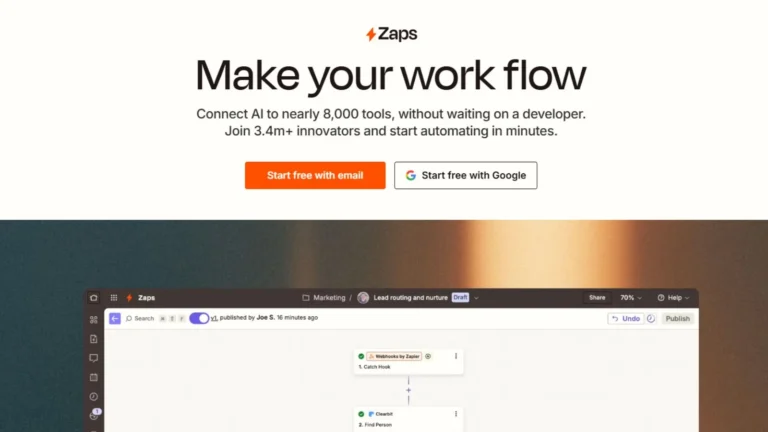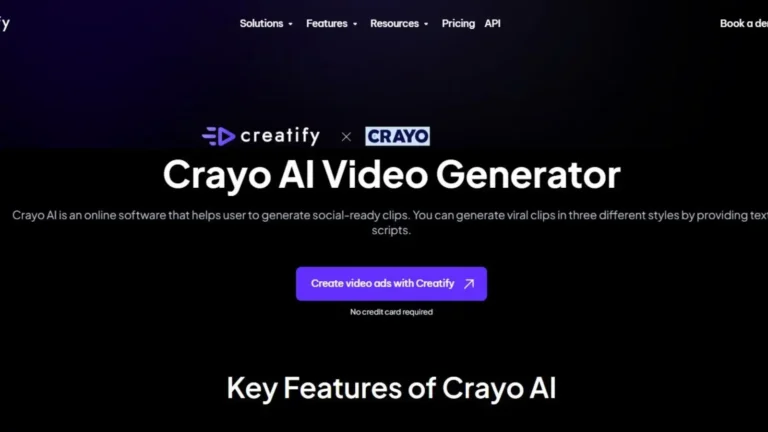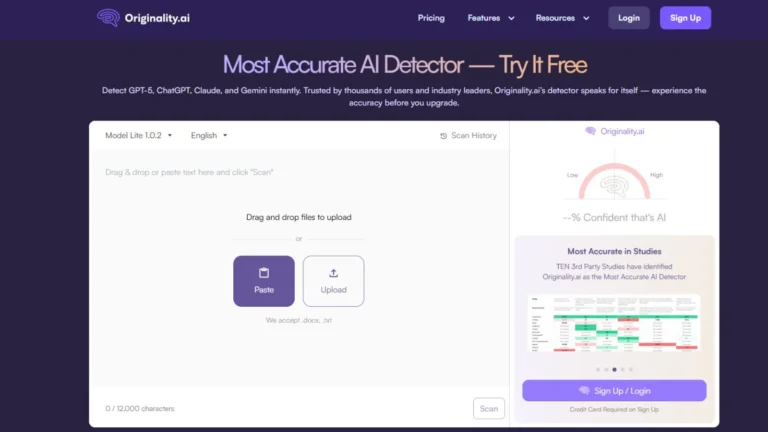Visit Tool
Laion: Revolutionizing Open AI Research and Innovation
Being usually someone very much invested in the ever-changing artificial intelligence landscape, I am ecstatic to bring to your notice a new non-profit organization called Laion which revolutionized the open access model in research and innovation with AI. The short form for “Large-scale AI Open Network,” Laion reflects upon the ideas of open innovation that aims to democratize access to some of the most powerful tools, datasets, and models in the AI field.
As opposed to many other industries where proprietary technologies and secrecy seem to prevail, Laion provides free and open resources with the purpose of public education, research, and sustainable development in AI. It commits to an open-source AI while taking a forward-looking approach to ecologically friendly best practices, putting Laion at the forefront of the movement toward a more inclusive, responsible AI ecosystem.
What is Laion?
Laion is a fully not-for-profit organization with the aim of making AI resources widely available for researchers, students, startups, and anyone interested in the artificial intelligence field. Instead of using many secretive approaches developed by many other organizations in the tech world, Machine learning tool embraces a fully open and transparent approach to sharing data and models. This service is provided for free with a view to encouraging collaborative environments where innovation can really flourish. With this open philosophy, Laion breaks down barriers in AI research, and its flow enables much more diverse individuals and organizations in the AI’s development.
What Makes Laion?
Laion stands out in the AI research community for several reasons, primarily due to the richness and scale of its offerings. Here’s an in-depth look at some of the key features that make Laion a game-changer:
1. Massive Datasets
The core of Laion’s offerings is its huge, open, and available datasets. They include:
- LAION-400M: A dataset comprising 400 million English image-text pairs. The dataset has become the only go-to source for AI researchers, especially for vision and language models.
- LAION-5B: The dataset is even larger in comparison; LAION-5B contains 5.85 billion multilingual CLIP-filtered image-text pairs, hence it makes it one of the largest open datasets. In the kind of languages, it is diverse and thus supports even more researchers and developers in their work with AI.
Both of these datasets have been filtered using Contrasting Language-Image Pre-training techniques, allowing the researcher to work with good-quality processed data, which is supposed to enhance the AI training. The scale and accessibility of these datasets enable researchers to dabble in a number of image-language tasks, which in turn fuels innovation in several areas, including especially image recognition and natural language processing, multimodal applications of AI.
2. Advanced Models
In addition to the datasets, Laion also offers access to powerful AI models. The largest of its offers is Clip H/14-the largest CLIP vision transformer model released to date. This model is a member of a family of models trained using the CLIP technique that permits an AI system to learn and generate relationships between images and text. Thanks to these models, Machine learning tool enables researchers to explore the latest AI tasks in areas like visual understanding, text-image matching, and even complex creative processes like generating images from textual descriptions.
3. Aesthetic Curation
Laion’s resources are far more mature than basic data and general models. The organization also curates datasets for more specific applications. For example, there is the curated subset of LAION-5B called Laion-Aesthetics. This model is trained on an aesthetic appeal scoring model, thus desirable for applications around art, design, and media where quality is primed in terms of visual attractiveness. Thus, Laion-Aesthetics researchers may now focus on aesthetic models emphasizing user appeal and beauty or adding sophistication to their AI projects.
4. Eco-Friendly Resource Usage
Laion is different in that it is committed to sustainable AI development. Machine learning tool favors reusing existing datasets and models, because it does not support an ‘unfriendly environment’ in AI research. Encouraging the sharing of resources helps mitigate the redundant efforts placed in the computational effort and helps minimize environmental impact that stems from AI training, as it is resource-intensive. A focus on sustainability is particularly crucial in the AI industry because, behind the curtain, greener and more responsible AI research has to make way for the space where large-scale model training pours significant environmental costs.
Benefits of Using Laion
Laion’s open, inclusive approach brings several advantages to the AI community:
1. Accessibility
The greatest advantage of Machine learning tool may perhaps be that its resources are available. The making free of datasets and models which Machine learning tool builds opens competitive opportunity for a student, startup, or independent researcher who cannot afford proprietary AI tools. Such democratization of AI is a game-changer-it opens cutting-edge research to a much more extensive community.
2. Support for Innovation
Laion’s open resources also promote creativity and cooperation in the AI field. Experts can experiment with huge databases and sophisticated models by finding things that are impossible without them. The use of open innovation at the organization’s side fosters a culture of creativity by enabling people to stand on each other’s shoulders and accelerate progress.
3. Learning Opportunities
More importantly, Laion offers educational institutions resources and individuals looking to learn on AI something worthwhile. Quality datasets and models let students hand on while experiencing going through AI technologies, which support in training the next AI experts. In these ways, Machine learning tool contributes to the present but invests in the future research and education in AI.
4. Sustainable AI Practices
Another key benefit of Laion is focus on sustainability. The organization promotes the reuse of existing datasets and models, thus decreasing the computational load that AI research entails. This not only makes AI accessible to more people but also works toward an overall goal of reducing the environmental impact that the tech world has begun to create.
Disadvantages of Laion’s Offerings
There are a couple disadvantages in Laion’s offerings despite its abundant benefits:
1. Complexity for Beginners
The sheer volume of complexity of datasets may overwhelm some new faces to AI research. While Machine learning tool provides some guidelines, the challenge would be that not everybody who visits the web page comes with a strong background in either AI or data science, making it hard to navigate and use the resources presented effectively.
2. Language Limitations
While multilingual, datasets hold a massive share which is English-centric. Such may lessen the efficiency of such datasets for non-English language speakers researchers, especially those developing AI models for underrepresented languages.
3. Resource Intensity
Large datasets and complex models of Laion demand high computation resources. This might be hard to access for individuals or organizations who are not privileged with such computation resources. It might thus limit the utility of tools from Machine learning tool, especially among those who do not have required apparatus or cloud computing abilities.
Conclusion
Laion is a “mighty leap” for the AI industry, giving open, free access to some of the most valuable datasets and models within this field. Open innovation encourages an even more inclusive and cooperative AI research community and advances sustainable practices. Despite the challenges – such as the complexity of the datasets and the resultant necessity for pretty major computational resources – offers by Laion become an invaluable resource for researchers, students, and innovators. The more AI grows, the more self-sufficient it will be, and the organizations like Machine learning tool will play a crucial role in keeping this technology accessible, transparent, and sustainable for all users.




